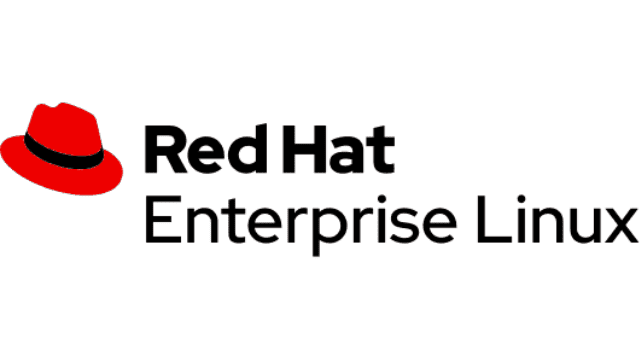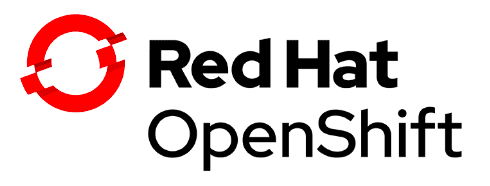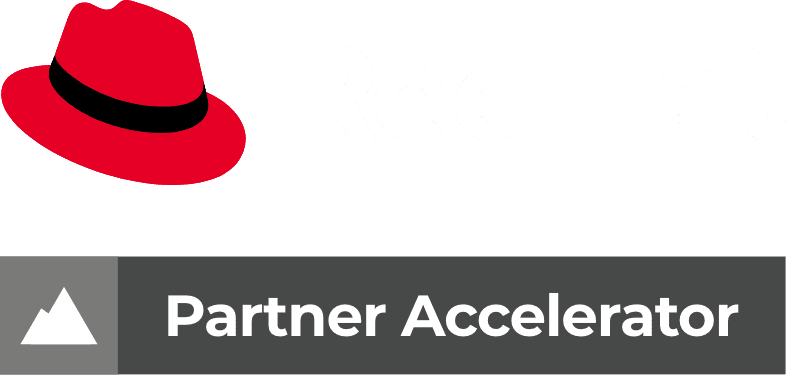Red Hat & PRESIDIO
Presidio and Red Hat enable customers to build a reliable foundation and to take their apps anywhere. Customers can trust Presidio’s professional services and Red Hat’s broad portfolio of hybrid cloud infrastructure, application services, cloud-native application development, and automation solutions to deliver IT services on any infrastructure quickly and cost effectively.
Presidio is a Practice Accelerator Partner in Automation with extensive experience delivering professional services for all of Red Hat’s product portfolio.
Joint Solutions
Maximizing IT Infrastructure Solutions with Presidio and Red Hat
Whether you have virtual workloads, containerized workloads, or a mix of both, Red Hat OpenShift Virtualization provides tools to build, operate, and scale with confidence—all from 1 platform.
Red Hat OpenShift Virtualization, a feature included in Red Hat OpenShift, allows for easy migration by bringing virtual machines into containerized workflows. By running a virtual machine within a container, you can deploy and manage virtual machines side by side with containers. This lets you continue benefiting from your existing virtualization investments while taking advantage of the simplicity and speed of a modern application platform.
Artificial intelligence (AI) is powering new discoveries and experiences across fields and industries. Use Red Hat platforms to build, deploy, monitor, and use AI models and applications, accelerated by the speed, trust, and transparency of the open source community.
Generating business value with AI innovation: How can AI drive tangible business outcomes? Explore ways to create value through innovative AI solutions. Innovating with a flexible and consistent platform: Red Hat OpenShift AI provides the foundation for flexible and consistent AI deployments. Understand how to leverage this platform effectively. Building AI solutions with confidence: Trust is essential in AI. How can we build robust, reliable, and ethical AI solutions? Dive into best practices and confidence-building measures.
Red Hat OpenShift is a platform that offers a consistent interface regardless of what infrastructure is used to build, deploy, and run applications. Red Hat OpenShift is the leader in helping customers securely accelerate application development and delivery on infrastructure that can be on-premises, in the public cloud and at the edge with consistent management, tools, and processes.
As an application platform, Red Hat OpenShift aims to give organizations a unified application platform to be more innovative and modernize their applications. As infrastructure, Red Hat OpenShift provides hybrid infrastructure spans from physical servers to virtualization platforms and private clouds in the data center. It provides a consistent experience and foundation for bare metal, virtualized and cloud-native applications, enabling businesses to use 3rd party ISV-packed apps, build their own, or modernize existing application types, no matter where they reside. That includes edge cases when customers need to move applications closer to their end users and source of data.
Operating across cloud and on-prem environments is incredibly complex. Doing it with speed and resilience–in spite of complexity and limited resources–is a daily challenge for IT teams. A few of the challenges our IT organizations face are:
The lack of automation standards, governance, and management strategy across disparate teams and tools – makes it difficult to scale best practices and drive efficiency
Manual processes can introduce security and compliance gaps as maintaining hybrid, multi-cloud environments can leave room for human error. Additionally, if your staff is working on mundane repetitive tasks, they aren’t focusing on more impactful projects.
The lack of skilled workers and inability to upskill existing workers creates bottlenecks in existing processes and introduces risk for the organization as it looks to grow revenue and optimize costs.
Red Hat Enterprise Linux (RHEL) provides a flexible and stable foundation to support hybrid cloud innovation. RHEL allows you to deploy applications and critical workloads faster with consistent experience across physical, virtual, private and public cloud, and edge deployments.
Benefits of RHEL as standardized infrastructure include: IT is a center of innovation that is productive, secure and efficient Consistent and repeatable experience across environments Automated administration of critical infrastructure Consistent application packaging, tooling, portability, and security.
CLIENT BENEFITS
Presidio + Red Hat = Application Modernization Strategists
Presidio and Red Hat share a vision of DevOps, as being more than the sum of its parts. It is the intersection of technology, practices and principles which help IT people focus on solving business challenges – not just the tools we use to do s
- Build, deploy, and monitor AI models with Red Hat platforms.
- Accelerate AI innovation with open source community support.
- Flexible and consistent AI deployments with Red Hat OpenShift AI.
- Build robust, reliable, and ethical AI solutions with best practices.
- Consistent interface for building, deploying, and running applications.
- Accelerate application development and delivery securely.
- Unified platform for innovative and modernized applications.
- Hybrid infrastructure for bare metal, virtualized, and cloud-native apps.
- Simplify operations across cloud and on-prem environments.
- Overcome lack of automation standards and governance.
- Reduce security and compliance gaps from manual processes.
- Address skill gaps and upskill workers to optimize processes.
- Provides a flexible and stable foundation for hybrid cloud innovation.
- Ensures consistent experience across physical, virtual, private, public cloud, and edge./li>
- Automates administration of critical infrastructure for efficiency.
- Offers consistent application packaging, tooling, portability, and security.
- Unified platform for virtual and containerized workloads.
- Easy migration of virtual machines to containerized workflows.
- Manage VMs and containers side by side.
- Leverage existing virtualization investments with modern platform benefits.
Fortinet Secure Networking addresses digital acceleration challenges by tightly integrating network infrastructure with advanced security across all edges. This provides consistent policies and a better user experience for the hybrid workforce.
RED HAT AND AMAZON WEB SERVICES
Pushing Boundaries & Breaking Barriers in the Cloud
Scale infrastructure and expand opportunities in line with your organization’s needs and business goals.
Red Hat and AWS help you accelerate new product development, optimize processes, and adopt innovative container and cloud technology to increase business agility and success. Together, Red Hat® and Amazon Web Services (AWS) give you the tools and technologies to adapt to market demands.
Presidio helps accelerate adoption of Red Hat on AWS. Through the combined use of OpenShift and Ansible, we can build and modernize applications and help automate the development process. The strength of our team is that in addition to full-stack development capabilities, we’re grounded in DevOps, Automation, Data and Cloud-Native principles. This allows us to modernize faster.
Amazon Web Services (AWS) and Red Hat provide a complete, enterprise-class computing environment. Red Hat solutions on AWS give customers the ability to run enterprise traditional on-premises applications, such as SAP, Oracle databases, and custom applications in the cloud. Customers benefit from the familiar interface and consistent environment of Red Hat Enterprise Linux (RHEL) and the simplicity and scalability of AWS.



1.
Optimize business processes to reduce time to market. Make your business more efficient and deliver products faster with innovative technology solutions.
1.
Optimize business processes to reduce time to market. Make your business more efficient and deliver products faster with innovative technology solutions.
2.
Adopt new technology to become more agile without restructuring. Integrate new technology into current processes to increase business performance and agility.
2.
Adopt new technology to become more agile without restructuring. Integrate new technology into current processes to increase business performance and agility.

HOW CAN WE HELP YOU?
LATEST CONTENT
Upcoming Events
Events
HOW CAN WE
HELP YOU?
Which one of these best
matches your needs?





